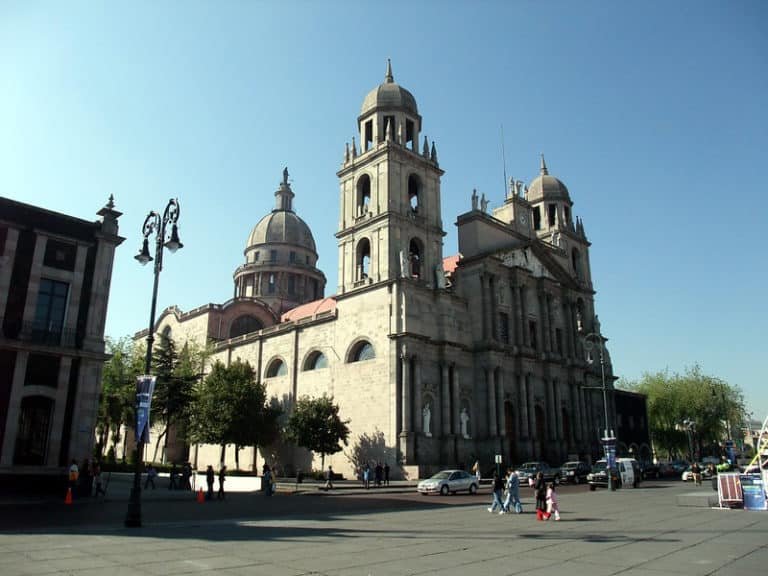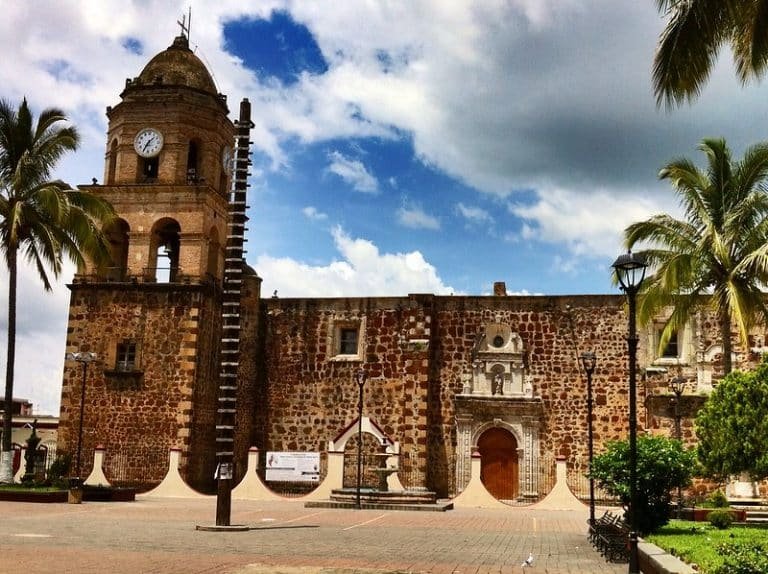Nuevo Leon Mexico – Travel Guide: 15 Best Places to Visit
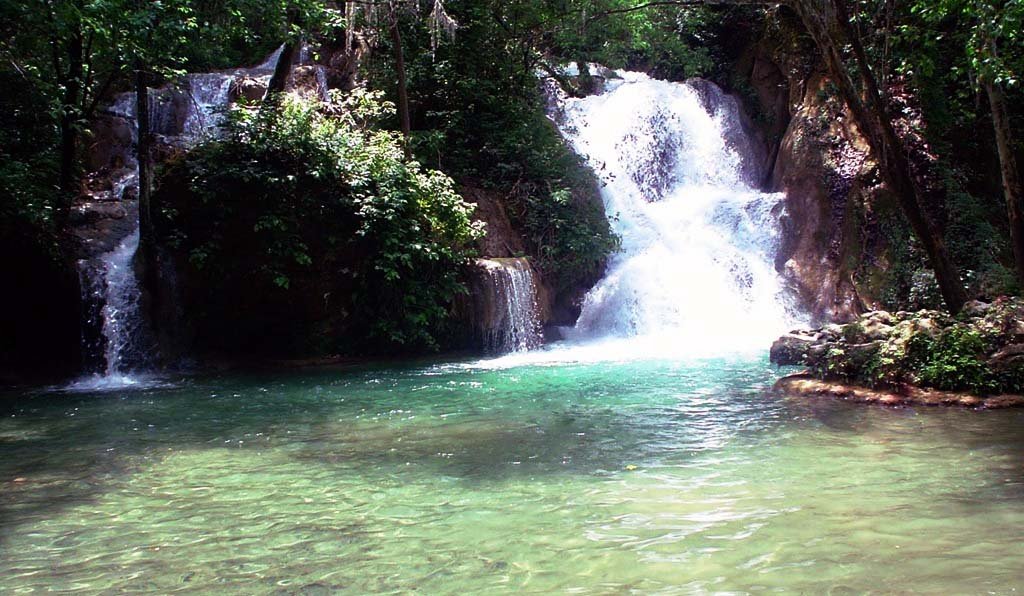
Tucked in the northeastern region of Mexico, amidst huge mountains and valleys, Nuevo Leon is a state bursting with natural beauty, rich culture, and vibrant urban life.
From the towering peaks of the Sierra Madre Oriental to the bustling streets of Monterrey, Nuevo Leon offers a diverse array of experiences for every traveler.
Whether you’re an adventure seeker, a history enthusiast, or a foodie, this guide will take you through the 15 best places to visit in this northern Mexican state.
Discover hidden gems, explore iconic landmarks, and immerse yourself in the local culture as you embark on an unforgettable journey through one of Mexico’s most captivating states.
The nearest U.S. border from Nuevo Leon is Laredo, TX, just a couple hours’ drive from Monterrey.
Top 15 Attractions in Nuevo Leon, Mexico
1. Linares, Pueblo Magico


Linares is one of the three Magical Towns in Nuevo Leon. It sits on the coastal plain of the Gulf of Mexico, on the border with Tamaulipas. It is 130 km from Monterrey and 155 km from Ciudad Victoria.
The Municipal Palace, Plaza de Armas, and the Cathedral of San Felipe Apostle are the most visited spots here.
The Plaza de Armas (main square) is on the first block of the historic center and has beautifully landscaped areas and a picturesque kiosk.
You may want to read: Monterrey Mexico: The Essential Traveler’s Handbook
In front of the plaza is the Palacio Municipal, a magnificent two-story neoclassical building with balconies and railings in front of the plaza.
Another beautiful building in front of the Plaza de Armas is the old casino of Linares, a French neoclassical style similar to the Paris Opera House.
If you visit Linares, you must try the famous Glorias, a delicious dulce de leche (caramel candy), a treat that made Linares famous.
Also, the tradition of the “drummers” is part of the cultural heritage of Linares. The sound of the drums accompanies a jarabeado norteño dance.
2. Hacienda Guadalupe

In 1667, the Spanish mining entrepreneur Alonso de Villaseca founded a viceregal hacienda on the road that currently links the Cerro Prieto Dam with the Magical Town of Linares, about 12 km from the town.
De Villaseca had a beautiful mansion built with ashlar walls, bulging columns, and terracotta roofs and donated the property to the Jesuit order in an attempt to appease the Chichimeca Indians of the region.
The Jesuits built the chapel and the aqueduct that carried water to the old sugar cane mill, almost 1 km from the hacienda, of which the ruins remain.
In the middle of the XVIII century, the Jesuits auctioned Guadalupe, which until that point, had been owned by different people.
At the beginning of the 20th century, before the Mexican Revolution, the hacienda was one of the most beautiful and prosperous in Nuevo Leon.
It was occupied by the revolutionary troops and after the Revolution, it recovered its agricultural boom.
In 1981 it was purchased by the Universidad Autónoma de Nuevo León and is the current home of the School of Earth Sciences.
3. Huasteca Canyon



The stunning Huasteca Canyon, near Santa Catarina, is within the Cumbre de Monterrey National Park.
When President Lázaro Cárdenas signed its creation decree in 1939, this national park in the Sierra Madre Oriental became the largest in the country, with almost a quarter of a million hectares.
La Huasteca offers the best outdoor activities such as mountain biking, hiking, and climbing.
In 2000 it was re-delimited to 176,356 hectares and now ranks fifth in the country in size.
The canyon is a rocky paradise, with limestone walls for climbing and rappelling in unbeatable conditions and vast spaces to admire.
Early-bird visitors to this canyon near Monterrey can watch the dawn behind Cerro de la Silla (Saddle Hill), shading the rocks in pink.
In the rainy season, a stream forms at the bottom of the canyon, and kayaking and other water sports enthusiasts enter the scene.
Hikers and mountain bikers have endless possibilities and those who crest the elevations enjoy splendid views.
Tour guides are available in the canyon to spectacular sites such as the Nido de los Aguiluchos and Guitarritas.
4. Bustamante Caves in Nuevo Leon, Mexico


These exciting caves are nestled in the Sierra de Gomas, 7 km from the Magical Town of Bustamante and 108 km northwest of Monterrey.
These caves were discovered in 1906 by a farmer collecting palm hearts. That’s why they are also known as “Grutas del Palmito.”
The tour of the caves is approximately 3 km long, where visitors observe the whimsical shapes that the stalactites and stalagmites have adopted over thousands of years.
In October 2018, Bustamante became a Pueblo Magico, the third in Nuevo Leon Mexico after Linares and Santiago.
Bustamante is well-known for its artisanal bread, like the polkas and semitas made in traditional brick ovens.
“Cabrito” wood fire grill kid is another gastronomic hallmark of the Pueblo Magico, as well as mezcal produced using the oldest techniques of the region.
Local handicrafts are mainly basketry and hats made from the natural fiber of the palm heart.
5. Chipitín Canyon


This gorgeous piece of haven is in the town of Potrero Redondo in the municipality of Santiago, Nuevo Leon.
It is mostly visited by rappel enthusiasts due to its various challenging levels, which guarantees a lot of fun for beginners and experts.
Cañon del Chipitin is in the Cumbres de Monterrey National Park and is also called “Siete Rápeles” (Seven Rappel).
The trip between Monterrey and Potrero Redondo takes about three hours and it is advisable to do it in a 4×4 vehicle, as these are necessary to reach the rappel points.
Usually, extreme sportsmen who go to Chipitín Canyon searching for adrenaline rushes, meet at the Cola de Caballo Hotel, 35 km from Potrero Redondo.
On the route between the rappel sites, springs and pools of crystalline waters are crossed.
There is a 90-meter waterfall, whose waters are dammed in charming emerald green and blue pools.
Other attractions of the Chipitín Canyon are the Cuevas de la Tía Rosa, the zip lines, and the Pozo del Gavilán.
In the town, there are cabins and horses for rent.
6. Cueva de la Boca

This popular cave is also known as “Cueva de Agapito Treviño,” the name of a legendary 19th-century bandit, a sort of Robin Hood from Nuevo Leon played by Pedro Infante in a movie of the Golden Age of Mexican cinema.
Treviño never killed anyone and was generous, sharing his earnings with people in need. He hid his loot in the Cueva de la Boca. He was shot in 1854, at the age of 25.
The cave is a bat sanctuary, home to six bat species. These fascinating animals come and go in herds, exhibiting their fantastic echolocation conditions.
At dusk, an enclosed cloud of some five million specimens leave the cave in search of food and return after eating tons of insects, which helps with pest control.
The Cueva de Agapito Treviño has not been fully explored and according to legend, somewhere, a small treasure is stored, the result of the robberies of landowners and wealthy people of the time.
Cueva de la Boca is in the municipality of Santiago, behind the curtain of the Presa de la Boca and its wide entrance can be seen from afar.
7. Matacanes Canyon in Nuevo Leon


Matacanes is another exciting site for extreme sports in Nuevo Leon, Mexico.
To get here, you must go to the town of Potrero Redondo and do the rest of the trip on foot.
It is a canyoned sector of part of the course of the Lagunillas River as it flows down the steep slopes of the Sierra Madre Oriental, with impressive rock walls, waterfalls, tunnels, and whimsical rock formations.
Several tours depart from Monterrey for this marvelous canyon, also in the Cumbres de Monterrey National Park, where you can rappel, jump into beautiful turquoise blue water pools, and slide down natural slides.
Matacanes is a truly extreme experience in Nuevo Leon. If you are out of shape, you should condition yourself physically in the run-up to the trip as the activities are very strenuous.
You must go with a professional tour operator and make sure there are enough guides in the group, at least one for every 5 visitors.
The busiest season is from May to August when the weather is more stable and the temperature is warmer. The winter season is for more experienced canyoners.
8. Chipinque Ecological Park


Chipinque is another amazing site in the Cumbres de Monterrey National Park of almost 1800 hectares, with altitudes ranging from 700 to 2200 meters above sea level.
It runs an ecological park of the same name 15 minutes from Monterrey and is open daily between 6 am and 7:30 pm.
Chipinque is managed by an organization with a board of trustees, which looks after the conservation of the environment while providing entertainment for visitors.
The park boasts an outdoor gym, hiking trails, mountain biking, wildlife observation, a butterfly farm, an insectarium, lookouts, and recreational areas.
In the butterfly garden, you can admire beautiful species, including the Vanessa cardui (painted lady).
- There are several viewpoints throughout the park to contemplate the immensity of the landscapes and the city
- The outdoor gym has a variety of stationary equipment to complement the sports activities
- The wooded trails allow visitors to admire the animal and plant species in the park
- The trails are guided, providing interesting information about the local flora and fauna, especially for the education of children and youngsters
9. Estrella Biopark – Nuevo Leon, Mexico

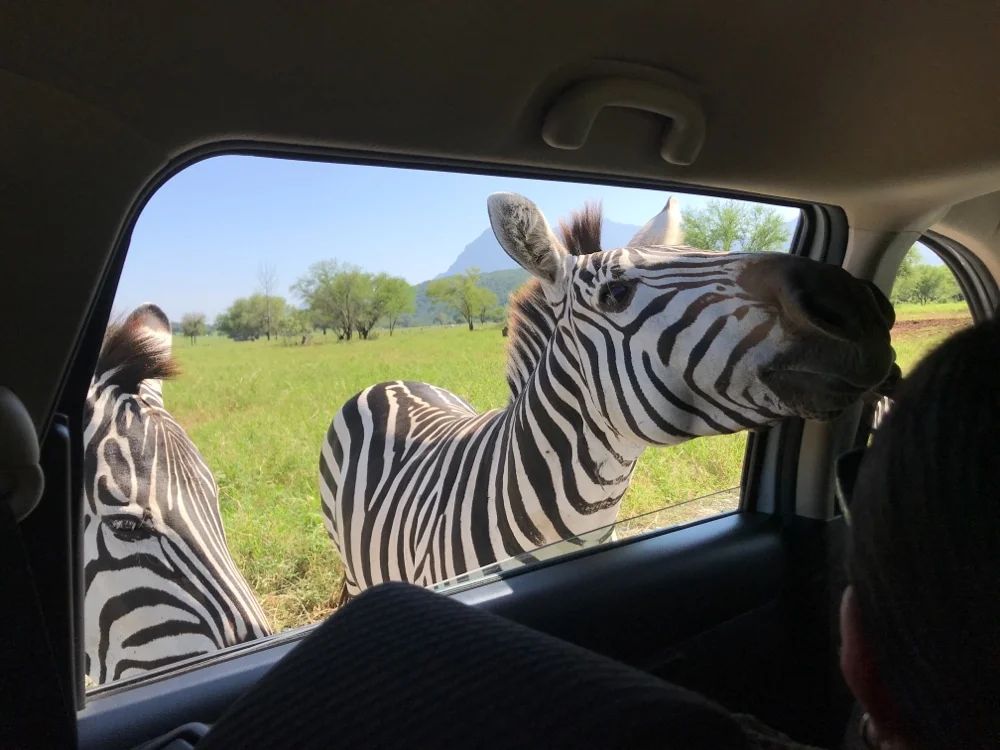
This park stands out among the tourist attractions in Nuevo Leon. It is located at km 9 of the highway to Rayones, near Montemorelos.
Its main attraction is the Serengeti safari, which allows visitors to see and feed various wildlife species.
Other attractions are Crocodiles in Action, The Arctic, Land of Dinosaurs, Rio Loko, and Mysteries of the Night.
The park features the Bara-Bara and Las Cascadas trails, the 7 Mountain Viewpoint, and the Animalia attraction for hikers and wildlife watchers, with animal shows.
Youngsters have fun ziplining on the Kamba zip line, while children enjoy the Mini Kamba and Chorritos.
There is also a climbing wall, a mini zoo, an area for animal rides, and an area for skill games.
In the Yucca Garden, there are several desert species, while the Mammoth Museum and the enormous skeleton of a whale provide knowledge of species from the past.
Entrance fees range from 200 – 450 pesos depending on the package of your choice.
The regular price includes all facilities except Rio Loko and the climbing wall, which have separate fees.
10. La Estanzuela Natural Park


With its wonderful natural scenery, there is a reason this place is called the “waterfall paradise” of Monterrey, Nuevo Leon.
The coniferous forests of the mountainous relief place a carpet of greenery over the spaces furrowed by streams of crystalline waters that form beautiful waterfalls.
Near the main entrance to the park is an old restored stone cabin that houses an environmental education center.
Walking along the cobblestone paths, inside the park, you begin to hear the sounds of nature, especially the clear, clean waters that run vertiginously, forming waterfalls.
The waterfalls form natural pools of delicious water, where you can take a refreshing dip.
After a half-hour walk uphill, you reach the main waterfall, the largest and most beautiful in the park.
It is open Wednesday to Sunday, from 7 a.m. to 5:30 p.m.
There are also palapas and you can request a guided tour. La Estanzuela Natural Park is on the road to Valle Alto, in the La Estanzuela sector, 20 km from Monterrey.
11. Cerro de la Silla, of course

“Saddle Hill” is perhaps the hallmark of Nuevo Leon, Mexico.
It is a mountain range of the Sierra Madre Oriental baptized in the 16th century by the Portuguese-Hispanic nobleman and explorer Alberto del Canto, founder of Saltillo and one of Monterrey’s first neighbors, due to its saddle-like profile.
This mountain has four peaks: Antena, La Virgen, and Sur and Norte, the latter being the highest at 1821 meters above sea level.
It was declared a Natural Protected Area and Natural Monument and there are several trails to crown the elevations, with stops along the way.
Cerro de la Silla is crucial for Monterrey’s sustainability and the preservation of its natural resources, including water, air, soil, and flora.
Furthermore, it is a refuge for wildlife species, such as armadillos, squirrels, opossums, coyotes, and red-tailed hawks, some of which are at risk of extinction.
12. Santa Lucia Canal, Monterrey

Monterrey has many attractions, but few like the Canal and Paseo de Santa Lucia; since its inauguration in 2007, it has become a popular attraction.
This artificial river with a pedestrian walkway is almost 3 km long, the longest of its kind in Latin America, and is one of the new wonders of Mexican engineering and construction.
It commemorates the Ojo de Agua de Santa Lucia, where the Malaga colonizer, Diego de Montemayor, founded the city of Monterrey in 1596.
The canal connects the Macroplaza with Fundidora Park, two other Monterrey attractions, and is crossed by small boats that are boarded near the Museum of Mexican History.
Along the walk, there are bridges, fountains, museums, murals, cafes, restaurants, and sculptures. It is similar to the San Antonio River Walk.
One of the most popular sculptures is La Lagartera, by the artist Francisco Toledo, installed in the canal, in front of the Museum of Mexican History.
13. El Sabinal National Park
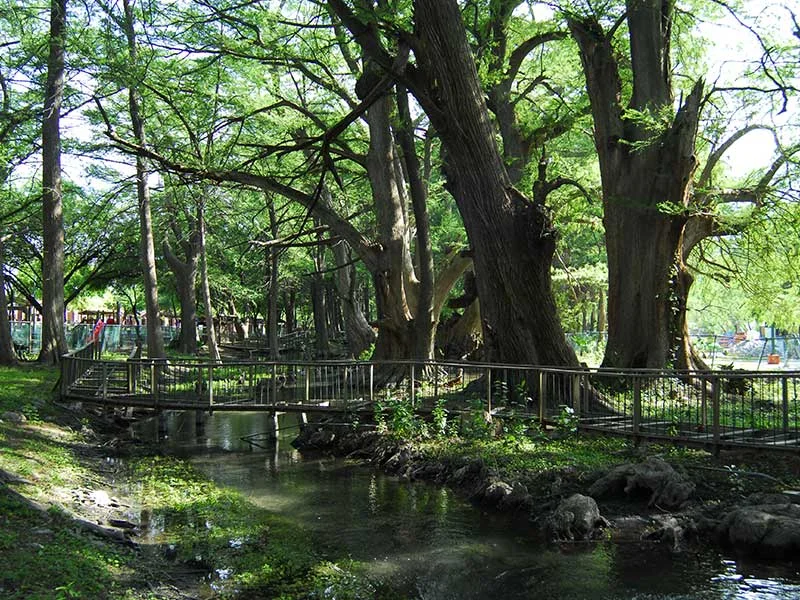
El Sabinal is on the outskirts of the town of Cerralvo and its name is due to the abundance of junipers that form gallery forests.
The sabino tree (ahuehuete, Mexican cypress) is a native species of Mexico, designated “national tree” in 1921 during the commemoration of the first centennial of the Independence, due to its characteristics of beauty, size, splendor, and longevity.
Sabinos can live for thousands of years and its name ahuehuete means “old man of the water” in the Nahua language.
With 7226 hectares, this national park is the smallest in the country.
It is transited by a small train and there is a community center and a swimming pool, palapas with barbecue grills, a playground, and walking trails.
14. El Cuchillo Dam

This important dam impounds the waters of the San Juan River in the Nuevo Leon municipality of China, 110 km east of Monterrey, and is one of the main water sources of the capital city.
It has a capacity of more than 1,100 cubic hectometers of water and is managed for tourism purposes as a state park.
El Cuchillo Dam is popular for sport fishing, especially because of the abundance of largemouth bass.
There are trails, palapas, barbecue grills, and camping areas.
The park is open Wednesday through Sunday from 7 a.m. to 7 p.m.
Fish outside the 15 to 21 inch range must be returned to the water and only one fish may be retained for consumption, except between March and April when all catches must be returned to the lake.
The municipality of China is named after San Felipe de Jesús de China, considered the first saint of Mexico.
15. Boca de Potrerillos Archaeological Zone
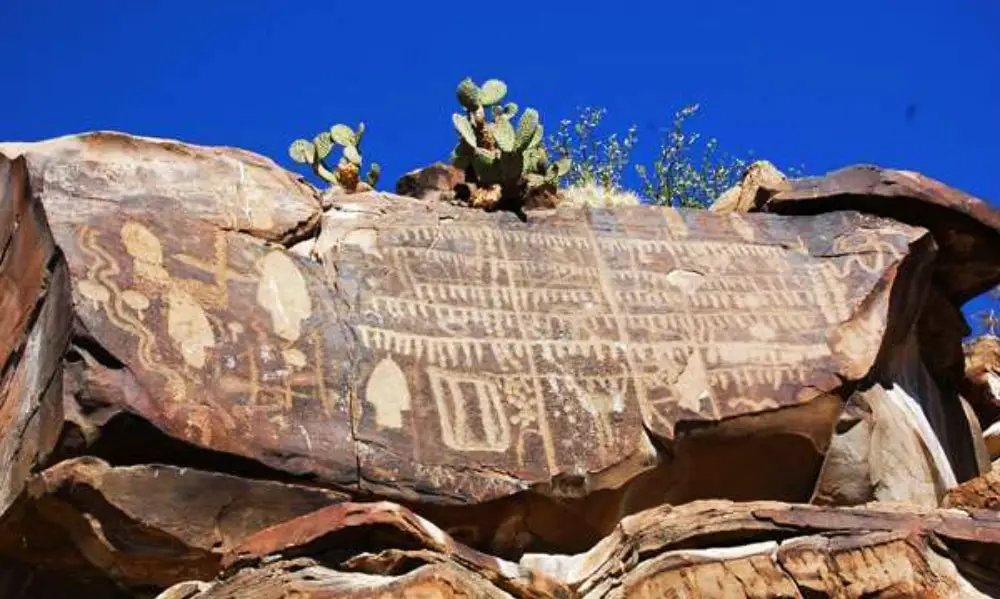

Among Nuevo Leon’s tourist attractions in the field of archeology, this site located at the entrance of the Potrerillos Canyon, near the municipal capital of Mina, 65 km northwest of Monterrey, stands out.
The great attraction of the place is the several petroglyphs and cave paintings, one of the biggest of its kind in Mexico.
Some 3,000 stone engravings have been counted, with abstract designs, and specialists have identified astronomical, calendrical, and ritual purposes.
The evidences show that it was a considerably numerous population and the remains of pre-Hispanic ovens and other objects dated with carbon 14 indicate that the oldest ones are from 9 millennia BC.
The most remote petroglyphs are 8000 years old.
For the petroglyphs of astronomical nature, it is believed that Boca de Potrerillos was an astronomical observatory of the communities that inhabited the area 7000 years ago.
Nuevo Leon, Mexico: Final Thoughts
Nuevo Leon, Mexico, is a treasure trove of natural wonders, cultural landmarks, and vibrant urban experiences.
From the awe-inspiring landscapes of Parque Ecológico Chipinque and Cascada Cola de Caballo to the rich history of the Museo del Noreste and the bustling streets of Monterrey, there’s something for every traveler.
Whether you’re an adventurer looking to explore the great outdoors, a history buff eager to delve into the region’s past, or simply seeking to immerse yourself in the local culture and cuisine, Nuevo Leon offers an unforgettable journey.
Your adventure in Nuevo Leon awaits!




